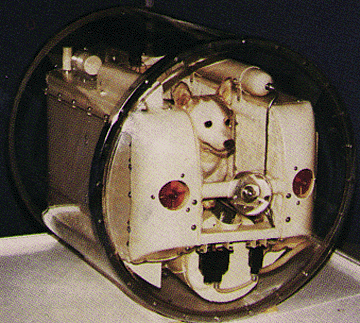
60 years ago the Earth had embarked on its journey beyond the stars and on November 3, 1957, Laika, the stray dog became the 'first astronaut' that was sent to space. Following the successful endeavour of the first ever man-made satellite Sputnik-1, which was launched on October 4, 1957, the then Soviet Union statesman Nikita Khrushchev had given the order to send a dog into space.
Laika was the first animal to reach for the stars in space. Before rising to global fame, Laika used to roam the streets of Moscow.
As the Cold War was spreading its claws and the Soviet Union had already shaken American superiority over technology by sending the first ever man-made satellite to the space, both USSR and America was aiming to send humans to space. However, very little was known about space journey and what effects it might have on the biological structure of man. Thus, 3-year-old Laika was sealed into a capsule, Sputnik 2, and was sent off on her journey on November 3, 1957, with electrodes attached to her body, which monitored the effects of space radiation on her organs.
Sadly, that was the last day anyone saw her. Laika died after only seven hours in space, as her life support batteries ran low.
The Soviet engineers had no way of bringing her back alive, although the world was told that she had enough food and life support to survive in space for a week before her death.
Laika was not the first dog that Russia had sent to space, but all the other flights with the other canines were suborbital, where the dogs were sent out of the atmosphere and brought back to Earth. Unlike Laika, all these dogs had survived the space flight.
Laika became the first ever living creature to step outside the Earth into space and also the first living being to die there. She became a national hero and her journey paved the way for the successful mission of Yuri Gagarin in 1961. Gagarin was the first human to go to space.









